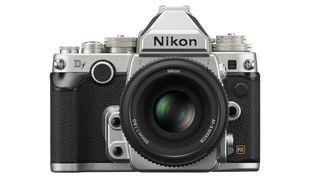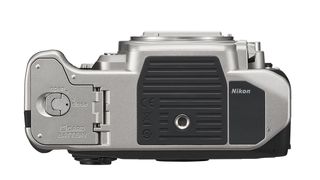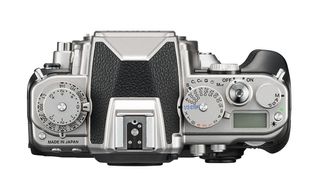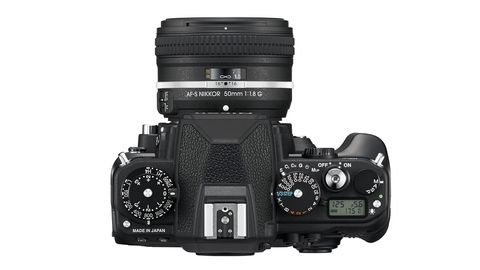Why you can trust TechRadar
As it has the same sensor and image processor as Nikon's range-topping SLR, the D4, it was always a fairly safe bet that the Df would be a good performer and it doesn't disappoint. Images have a high level of detail and noise is controlled well.
Our tests indicate that the Df produces JPEGs that have similar noise levels to the D4's, but the raw files (after conversion to TIFF using Nikon's Capture NX) have a lower signal to noise ratio, indicating that there is more noise visible. However, the Df is also capable of capturing more detail in both file types at the higher sensitivity settings.

Noise is controlled extremely well even when the sensitivity is pushed to ISO 12,800, and ISO 25,600 shots are pretty decent with some looking acceptable at A3 size. However, we'd be very cautious about pushing any higher than this as noise becomes obvious and some areas in images taken at ISO 102,400 and 204,800 show some banding and have a magenta cast. These values are outside of the native sensitivity range indicating that Nikon isn't entirely happy with its image quality and are best held for emergencies only.
When time allows, live view provides the best view for manual focusing as the enlarged view enables the focus to be placed very precisely. Predictably, the Df's live view autofocusing system isn't its greatest asset. It's reasonably quick in good light, but it becomes rather slow and hesitant when light levels fall. However, we suspect that few Df users will be concerned by this as they are more likely to use the viewfinder to compose images or manual focus in live view mode.
We have seen the Df's 39-point Multi-CAM 4800 AF module before and with the right lens mounted it is excellent. With an optic like the superb AF-S Nikkor 70-200mm f/2.8G ED VR II in position, subjects are brought quickly into sharp focus even in very low light and the camera can track them around the frame. Switch to an AF Nikkor 20mm f/2.8 D or similar lens, however, and naturally things slow up a bit – particularly if the peripheral linear (Non-cross-type) points are used.

The Df's screen is detailed and clear, but it suffers from the same problem as the D610's screen and over-emphasises the cool tones in some scenes. This can fool you into changing the white balance setting to produce warmer looking images and can result in shots that look too warm on the computer screen.
Our tests reveal that the Df's automatic white balance settings (there are two, with Auto2 being designed to retain a little more warmth) generally do a good job, but as we have found before, slight changes in composition can result in noticeable changes in image colour.
That said, image colour is generally good straight from the Df. The results are natural and JPEGs have a pleasing level of contrast when the Active D-Lighting is set to the default, Normal, value. As the Df is a camera for photographers who want to take control over their images, most users will shoot raw files, but its helpful to have good-looking JPEGs captured at the same time.

In very high contrast conditions the Extra High1 and Extra High 2 Active D-Lighting settings enable highlights to be retained while giving detail in the shadow areas, but not surprisingly, the results can look rather flat and HDR-like.
In most situations the Df's Matrix metering system, which like the white balance and AF system is informed by the dedicated 2,016-pixel RGB sensor and Scene Recognition System, performs well in most situations. It seems to take most things in its stride and delivers well-exposed shots in a wide range of situations. However, it's clear that the exposure is weighted towards the brightness of the area under the active AF point, so positioning it over a bright spot will produce a darker image and when it's over a dark area the image is brighter. Slight changes in composition also have an impact.
Current page: Performance
Prev Page Build quality and handling Next Page Image quality and resolution
This Game Boy-styled MagSafe stand just tickled my retro-gaming synapse – now all I need is a matching controller for Nintendo emulators

AI Explorer could revolutionize Windows 11, but can your PC run it? Here's how to check

Netflix's Wednesday season 2 cast clicks into gear with Westworld star addition as Apple's Neuromancer series finds its lead
